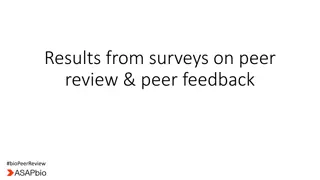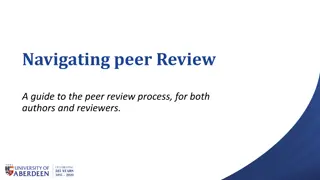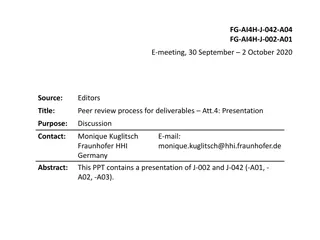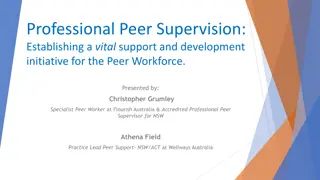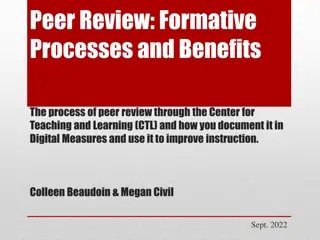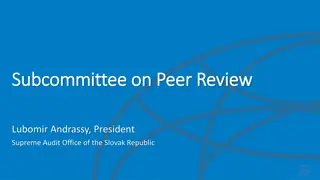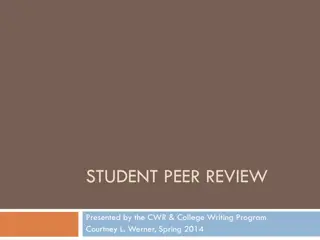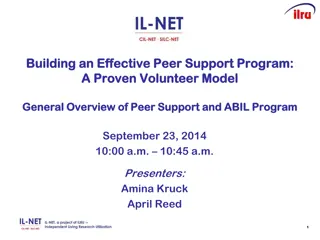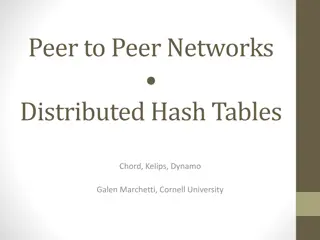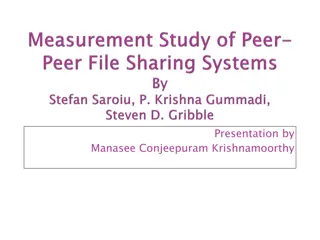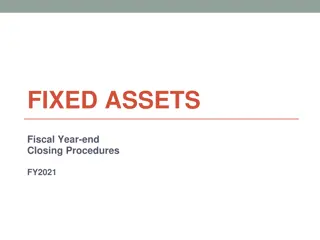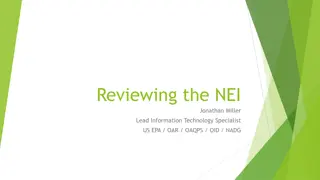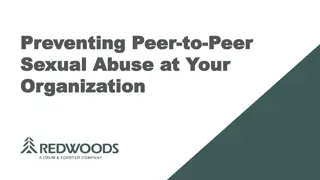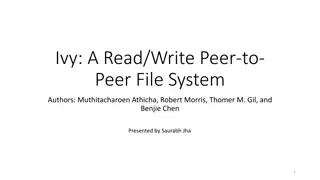EIS Peer Review
Anne Yagi's EIS Peer Review highlights failures in conducting biological field surveys for endangered species and lack of due diligence in meeting environmental standards. Recommendations for Butternut tree habitats are also outlined. The findings indicate a lack of adherence to MNRF protocols, particularly regarding Fowler's toad and bats.
Download Presentation

Please find below an Image/Link to download the presentation.
The content on the website is provided AS IS for your information and personal use only. It may not be sold, licensed, or shared on other websites without obtaining consent from the author.If you encounter any issues during the download, it is possible that the publisher has removed the file from their server.
You are allowed to download the files provided on this website for personal or commercial use, subject to the condition that they are used lawfully. All files are the property of their respective owners.
The content on the website is provided AS IS for your information and personal use only. It may not be sold, licensed, or shared on other websites without obtaining consent from the author.
E N D
Presentation Transcript
EIS Peer Review Prepared b Anne Yagi, M.Sc., EP, CERP President 8Tress Inc. Retired MNRF Management Biologist
Findings Failed to conduct Biological Field Surveys during appropriate seasons (i.e., Fowler s toad- Endangered Species) and failed to complete due diligence with respect to ESA Failed to conduct Biological Surveys during appropriate environmental conditions (i.e Endangered bat species) and therefore did not complete due diligence with respect to MNRF protocol Failed to complete due diligence with respect to Butternut (Endangered species) The EIS would not meet today s standards.
Failed to conduct Biological Field Surveys during appropriate seasons or complete due diligence (i.e Fowler s toad- Endangered Species) Did not recognize the presence of a Fowler s toad breeding site and the potential breeding site within Kautz Creek mouth in any mapping and therefore not apply protective planning measures Amphibian surveys were conducted while Fowler s toads are in hibernation, ground frozen and freezing temperatures No follow-up communications with MNRF or MECP responsible agency for the Endangered Species Act
Failed to conduct Biological Field Surveys during appropriate Environmental Conditions MNRF SAR Bat protocol Minimum of 10 days in June during low wind, warm nights Did not provide details as to methods (where receivers were placed or how many, or orientation) Did not provide detailed results especially when there are overlapping echolocations such as Red bat and Myotis sp. No follow-up communications with MNRF or MECP responsible agency for endangered species
Butternut (Endangered Species) recommended that the habitat regulation be applied strictly to Butternut trees that are healthy (i.e., they are not affected by Butternut canker to such a degree that they are considered non- retainable , as determined by a qualified Butternut Health Assessor and/or Ontario Ministry of Natural Resources) and are: naturally-occurring (i.e., that are not planted); or planted as a requirement of a permit issued under section 17 of the ESA, or are progeny of trees that were planted to satisfy such a requirement (e.g., for overall benefit or as part of an approved planting plan).
Recovery Strategy Butternut regulating a minimum radius of 25 m around each tree is an appropriate approach to ensure the habitat conditions required for the survival of each tree can be maintained, including area for the potential growth of trees that may survive to maturity; and habitat for regeneration that occurs within this radius is also protected.
Follow up EIS be sent to MNRF (because they provided original species screening and should be checked for due diligence) and sent to MECP for agency review because they administer the Endangered Species Act. All field data be provided in EIS All correspondence with agencies be provided in EIS especially correspondence with NPCA, Municipality and Region Mapping of endangered species habitat protection areas may interfere with municipal plans for a public shoreline park and the protection required for Kautz creek especially at the shoreline interface. And the presence of endangered Fowler s toad will prohibit use of engineered storm ponds as they are an ecological trap for Fowler s toads.






